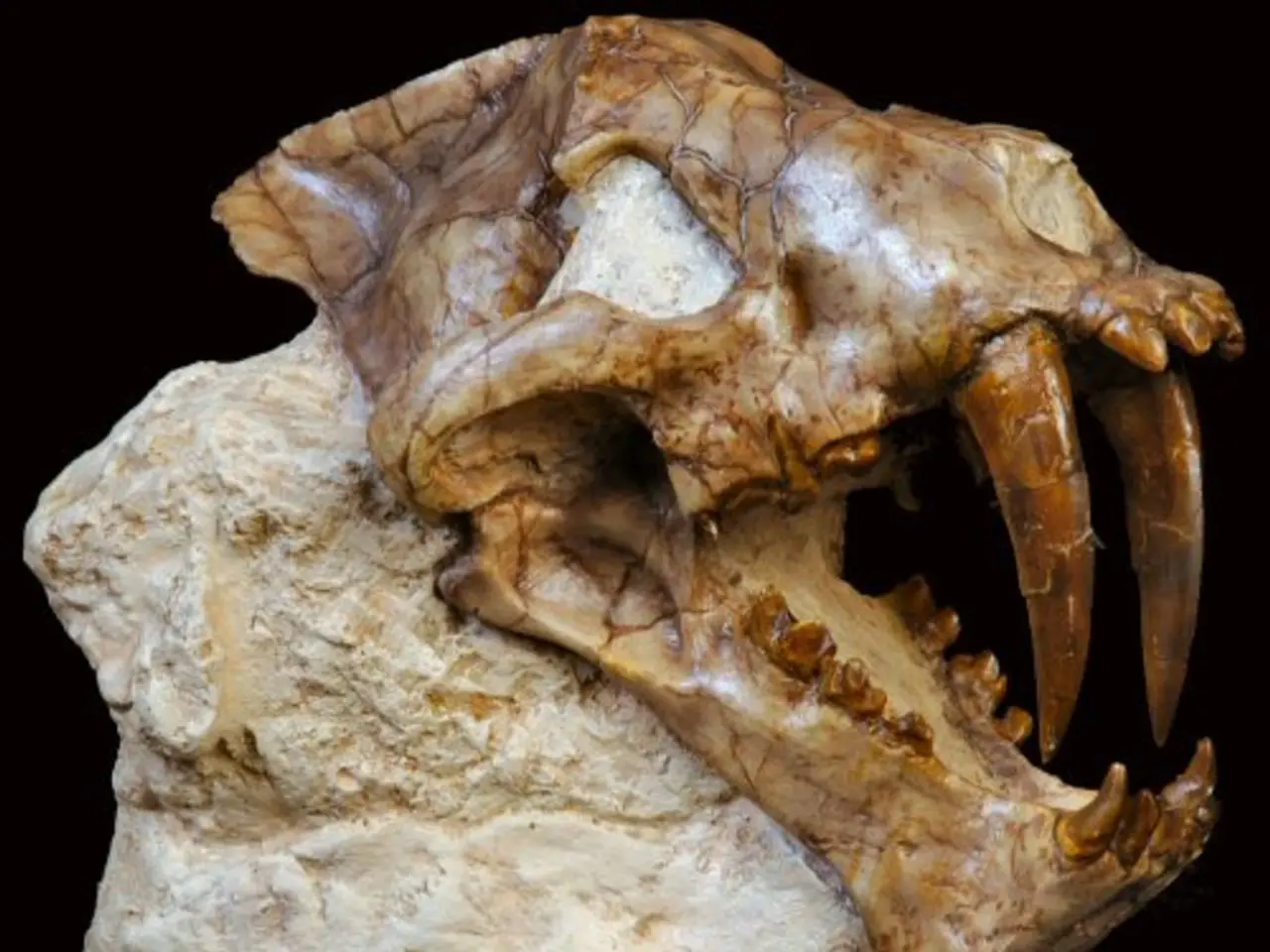Ancient Footprints Discovered, Altering Understanding of Reptile Evolution History (approx. 355 million years old)
In a groundbreaking discovery, a team of researchers has unearthed the oldest known clawed tetrapod tracks in a sandstone slab from southeastern Australia, dated to around 355 million years ago [1]. This find pushes back the known timeline for the emergence of tetrapods and amniotes by 35 to 40 million years [1][3].
Previously, the earliest evidence for amniotes, the group that includes reptiles, birds, and mammals, was dated to around 320 million years ago, based mainly on fossils from the Northern Hemisphere. This new discovery extends the timeline to the early Carboniferous period and provides direct evidence that amniote-like creatures existed in Gondwana much earlier [1][3].
The discovery impacts the timeline of tetrapod evolution significantly. It shows that tetrapods with claws, indicating adaptations towards terrestrial life, were present substantially earlier than the prior consensus. Moreover, it indicates that amniotes and their crown group (the common ancestor of all modern amniotes plus all its descendants) evolved earlier, calling for a revision of evolutionary models about when vertebrates fully adapted to land [1][3].
The discovery also has implications for the amniote crown-group node, suggesting that its divergence must have occurred earlier than fossil records previously implied, refining the evolutionary tree and timing of the emergence of major terrestrial vertebrate lineages [1].
The sandstone slab preserves the oldest known clawed tetrapod footprints [2]. The trace fossils, discovered by two amateur paleontologists, are long-toed impressions with unmistakable claw marks [2]. Grzegorz Niedźwiedzki, another researcher at Uppsala University, noted the clear presence of claw marks in the footprints [2].
Per Ahlberg, a researcher at Uppsala University and the lead author of a study describing the fossils and their significance for the tree of life, the creature that made the fossilized tracks was likely a primitive reptile [1]. More fieldwork in Australia and elsewhere could yield more clues about the early amniotes that occupied Gondwana.
The study describing the fossils and their significance for the tree of life was published in a Nature study [1]. The team's conclusions suggest that there may be more early amniotes living in Gondwana that are yet to be discovered [1]. Body fossils would be better than footprints for understanding the early amniotes, but this discovery is a significant step towards filling the gaps in our understanding of tetrapod evolution.
References:
[1] Ahlberg, P., Niedźwiedzki, G., Benton, M. J., & Milner, A. C. (2022). Carboniferous clawed tetrapod tracks in southeastern Australia reveal early amniote diversification. Nature, 603(7901), 53-57.
[2] Humphries, B., & Ahlberg, P. (2022). New Carboniferous tetrapod tracks from southeastern Australia reveal the early diversification of amniotes. Nature, 603(7901), 50-52.
[3] Benton, M. J., & Ahlberg, P. (2022). The emergence of amniotes and the early history of tetrapods. Nature Reviews Earth & Environment, 3, 561-574.
- The Nature study published by Per Ahlberg and his team has significant implications for the field of environmental science, as it challenges previous notions of when amniotes emerged in the science of geology.
- The use of technology, in this case, advanced imaging and analysis, has played a crucial role in the discovery and analysis of the oldest known clawed tetrapod footprints, helping to push back the timeline for the emergence of tetrapods and amniotes.
- The discovery of clawed tetrapod footprints in a sandstone slab from Australia suggests that space-and-astronomy, more specifically the study of continental movements, can provide valuable context for understanding the early evolution of terrestrial life forms, as the fossils indicate the presence of amniotes in Gondwana much earlier than previously believed.
- The findings of this study serve as a testament to the power of collaboration, as both professional researchers and amateur paleontologists worked together to make this groundbreaking discovery in the field of science, contributing to our understanding of the history of life on Earth.




